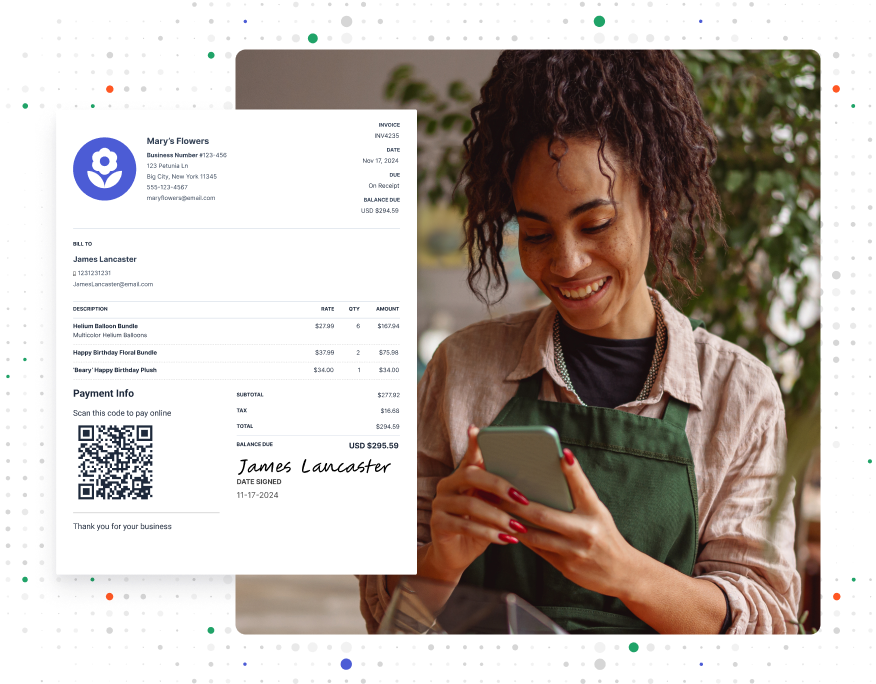LLC Tax Classifications: A Guide for Small Businesses

When you run your own business, you wear a lot of hats. And getting your LLC taxes right is one hat that can’t be crooked.
Your LLC tax classification determines how the IRS treats your business. You can choose to have your limited liability company (LLC) taxed as any type of business entity. This includes options like a sole proprietorship, partnership, or corporation.
Making the right choice could save you a bundle. Making the wrong one could mean leaving money on the table. Let’s break down how LLC taxes work and help you choose the best tax classification for your business.
RELATED ARTICLE — Filing Business Taxes for LLC for the First Time: Everything You Need To Know
How Is an LLC Taxed?
Think of your LLC as the chameleon of the business world. While it protects your personal assets year-round, it can change its tax classification to match your needs. (Note that there are some limitations, like how often you can switch between LLC structures.)
1. Sole Proprietorship Taxation
If you own a single-member LLC, the IRS keeps things simple by default. Your single-member LLC becomes what tax pros call a “disregarded entity.” Don’t let that fancy term scare you. It just means your LLC’s income flows straight to your personal tax return. That’s why it’s also called pass-through taxation.
This default treatment makes your LLC a sole proprietorship for tax purposes. You’ll report your business income on Schedule C of your personal tax returns. Tax returns for LLCs with this status don’t require a separate business return.
But there’s a catch. You’ll need to pay self-employment taxes on your earnings. That’s 15.3% on top of your regular personal taxes.
RELATED ARTICLE — How To Pay Yourself as a Small Business Owner
2. Partnership Taxation
If you have business partners, your LLC is probably taxed as a partnership by default. Each year, your business entity files Form 1065 to tell the IRS how much it made. But it’s not a tax return. It’s more like a report card for your pass-through entity.
You and your partners each get a Schedule K-1 showing your share of profits or losses. Like sole proprietorships, partnerships are pass-through entities, so everything flows to your personal tax returns.
3. S Corporation Taxation
As a pass-through entity, an S corporation helps you avoid double taxation. You’ll file Form 1120-S each year, and LLCs taxed this way provide owners with Schedule K-1s for their share of profits. You pay yourself a reasonable salary as an employee, which can help reduce your self-employment tax burden by limiting it to your salary rather than all your business profits.
4. C Corporation Taxation
For some LLCs, being taxed as a C corporation makes sense. Unlike S corporations, C corporations face double taxation. Your business pays the corporate tax rate (currently 21%) on its profits. Then, shareholders pay personal taxes on any dividends. But this structure can be ideal if you’re planning to reinvest heavily in your business or seek major investment because retained earnings can be reinvested at a lower tax rate than pass-through profits.
This tax classification requires filing Form 8832 with the IRS and brings some key changes.
RELATED ARTICLE — How To Calculate Retained Earnings And Why It’s Important
How To File Taxes as an LLC: Influencing Factors

Choosing the right tax classification for your LLC shouldn’t be done lightly. Let’s look at what matters most when making this critical decision:
Your Business Setup
The number of owners in your LLC shapes your default tax classification. A single-member LLC starts as a sole proprietorship. If there are multiple owners, the IRS treats you as a partnership by default.
Keep in mind that once you change your LLC tax classification, you’ll need to stick with it for 60 months. That’s why it’s a good idea to think about where your business is headed, not just where it is now.
Money Matters
Your tax classification can affect your bottom line in a few different ways, including:
- How much self-employment taxes you pay
- The business deductions you can take
- Whether you’ll face double taxation
- How complex your tax returns will be
- What you’ll spend on tax preparation
Your personal income outside the business matters too. Some tax classifications work better than others, depending on your total earnings. And don’t forget about state taxes. They can vary depending on how your LLC is taxed.
RELATED ARTICLE — Small Business Tax Returns: Everything Business Owners Need To Know
Taxes With an LLC: Key Benefits
If you’re wondering why so many small businesses choose the LLC structure, the tax benefits play a big role. Here’s what makes LLC taxation special:
Dodging Double Taxation
Most LLC tax classifications help you avoid paying taxes twice. As a pass-through entity, your business income flows directly to your personal tax return. You only pay taxes once, unlike traditional corporations.
Changing When You Need To
Your LLC can switch tax classifications as your business grows. Start as a sole proprietorship, then move to a partnership if you take on new investors. You can adapt without changing your basic business structure. You just need to stick with your chosen classification for a few years before changing it again.
Getting Corporate Perks the Easy Way
LLCs taxed as corporations gain big-business benefits without all the paperwork. You’ll spend less time on administration and more time growing your business. Plus, you’ll have fewer forms to file than traditional corporations.
RELATED ARTICLE — The 8 Most Common Business Structure Types and How To Choose One
Taxes With an LLC: Drawbacks
Running an LLC isn’t all smooth sailing come tax season. Here are some challenges to consider:
Self-Employment Taxes
If your LLC is taxed as a sole proprietorship or partnership, get ready for self-employment taxes. You’ll pay 15.3% on top of your regular income tax. That’s because you’re covering Social Security and Medicare taxes for both the employer and employee sides.
Pay As You Go
Most LLC owners need to make estimated tax payments every quarter. Miss a payment or underpay, and you could face penalties. You’ll need to project your annual tax bill accurately, set aside cash for payments, keep track of multiple due dates, and handle both federal and state estimates.
Limited Deductions
Tax deductions for LLCs come with strings attached. You can only deduct losses up to your investment in the business. Plus, you’ll need rock-solid documentation for every business expense. The IRS tends to look closely at LLC deductions, so keep those receipts organized.
FROM ONE OF OUR PARTNERS — 10 Tax Laws to Know for Your Small Business
5 Tips for Filing Taxes With an LLC

Smart tax management starts well before tax day. Here’s how to keep your limited liability company ahead of the game:
1. Know the Rules Cold
Keep up with IRS guidelines for your tax classification. Tax laws change often, and each state also has its own rules for LLCs. Watch for IRS updates that might affect your business. Make sure you understand all tax return deadlines and keep detailed records of everything the IRS might want to take a look at.
2. Take Smart Deductions
Don’t forget about deducting your LLC startup costs. Track everything you spend to get your business entity going. This includes all formation fees and legal costs. Keep receipts for initial equipment and inventory purchases. Document any training or consulting expenses that helped you get started.
3. Plan for Success
Make tax return season smoother by thinking ahead. Work with a tax professional if your taxation situation gets complex. Review your tax classification each year to make sure it still fits. Stay on top of all payment deadlines to avoid penalties. And be ready for a potential IRS audit by maintaining clear records.
4. Think Long-Term
Your LLC’s tax needs will grow with your business. Think about how you might want to reinvest profits as you expand. Consider your retirement planning options and how different tax classifications will affect them. Plan for future financing needs, since some investors prefer certain entities. Consider how geographic expansion might affect your state taxation.
5. Stay Organized
Running an LLC means keeping clean books. Never mix business and personal expenses. It’s a recipe for trouble with personal taxes.
Use good accounting software to track all business income coming in and going out. Keep detailed records of all transactions and document your investment in the pass-through entity carefully. And save all important business paperwork where you can find it quickly.
FROM ONE OF OUR PARTNERS — What Receipts Do I Need to Keep for Tax Time? Tips for Small Businesses
Business Expense Tracker
Save time during tax season by getting your LLC’s expenses organized now.
Tracking expenses has never been easier. Our business expense and receipt tracker lets you scan any receipt, and we capture key info automatically. All your expense data is ready to export into a summary report whenever you need it.
Start Your First
Invoice Today
Create customized and professional
invoices and connect with clients
